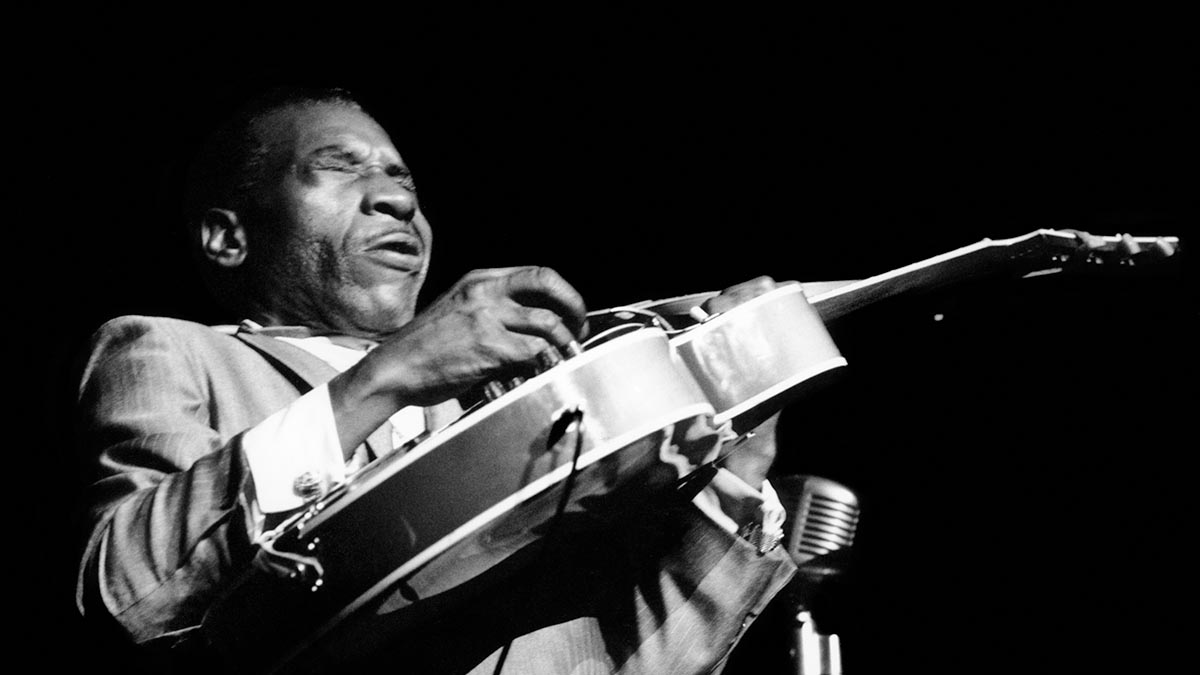5 T-Bone Walker licks every blues guitarist needs to know
A trailblazer of blues guitar, a born entertainer, T-Bone Walker has influenced generations of players. Here, we look at how he added a jazzy flair to his solos for maximum effect

T-Bone Walker’s influence can be heard in the playing of countless great blues players, sometimes filtered down through the work of luminaries such as B.B. King and Stevie Ray Vaughan. These others may have expanded the vocabulary but T-Bone’s timeless licks make up a significant part of the DNA of modern blues guitar.
Unlike many players from the same era, T-Bone didn’t employ the 6th degree over dominant 7th chords to the same extent as other players, but there’s still a definite jazzy vibe to his blues. And while much of his soloing is harmonically simple he did add a few jazz influenced details.
In the intro to the song Mean Old World, which features descending dominant 7th chords, he consistently plays the more sophisticated 13th chord – a regular dominant 7th with the 13th (and major 9th) degrees added.
One of the defining elements of a blues player’s style is the way they play over the V chord in bar 9 of a 12-bar blues. T-Bone would often target the root of that chord. Simply landing on that one note immediately suggests that we’ve actually observed the chord change (targeting). Of course he’ll often then go back to the blues scale (or minor pentatonic) for the I chord.
Another cornerstone of any blues player’s style is the turnaround. T-Bone seems to play off the I chord blues scale but often hits the root of the V chord in the final bar of the 12-bar form. He’ll often solidify the sound of this V chord by playing a #9 (or b3rd) of that chord. You could say that this has something of the 7#9 sound to it (very Jimi and SRV).
The way that T-Bone uses the 9th on the top of the G minor or G major pentatonic shape scertainly eems to lay the groundwork for Stevie’s style, many years after T-Bone’s era. SRV expanded on the use of that note by adding the b9 degree (only ever used momentarily) for a little dissonant grind – for example, check out the studio version of Texas Flood.
T-Bone’s influence is also evident in the playing of Buddy Guy and, as mentioned, B.B. King and Jimi Hendrix. His bends and phrasing were also an influence on players like Scotty Moore.
All the latest guitar news, interviews, lessons, reviews, deals and more, direct to your inbox!
Get the tone
Amp Settings: Gain 3, Bass 6, Middle 5, Treble 6, Reverb 3
T-Bone played Gibson archtop guitars, but you can get similar tones on Strat, Les Paul or Tele style guitars. Go for a clean neck-pickup tone with a hint of edge to the notes.
An American-style guitar amp is also your friend here. Add a light splash of reverb for ambience and warmth, and experiment with your guitar’s volume and tone controls to fine-tum the sound.
Example 1
Here’s a typical T-Bone line. It’s based on the blues scale but targets the major 3rd from the minor 3rd and notably incorporates the 9th degree, too.
Example 2
Notice the bend up to the b5 (Db) for a crunchy bluesy sound. These bends might need practice – to get the ‘sound’ of the Db, play it as a fretted note first.
Example 3
Here’s another key T-Bone device: unison bends. This can be heard in many rockabilly solos, and was also favourite of Jimi Hendrix.
Example 4
We start with the blues scale, including that bend to Db but end up running the chord tones of G7, showing T-Bone’s harmonic control.
Example 5
This is the type of T-Bone line that paved the way for SRV’s style years later. Again, the 9th is a standout feature!
A professional guitarist for many years, Andy G Jones has played with Van Morrison, James Ingram, Lamont Dozier, Queen (Brian May and Roger Taylor), Robben Ford, Billy Cobham, John Illsley (Dire Straits), KT Tunstall, Albert Lee (featured on Andy's upcoming CD), Mike Finnigan, Dave Landreth and Ryan Voth from The Bros. Landreth, Malford Milligan, The BBC Radio Big Band, Patti Austin, Hamish Stuart (Average White Band), Lalo Schifrin (Hollywood film composer Bullitt, Mission Impossible), Hank Marvin, James Dean Bradfield (the Manic Street Preachers), Grady Tate, Agnetha from ABBA, Cliff Richard, Dudley Moore, Nathan James (Inglorious), Joey Tempest (Europe) and Kelsey Grammar.


